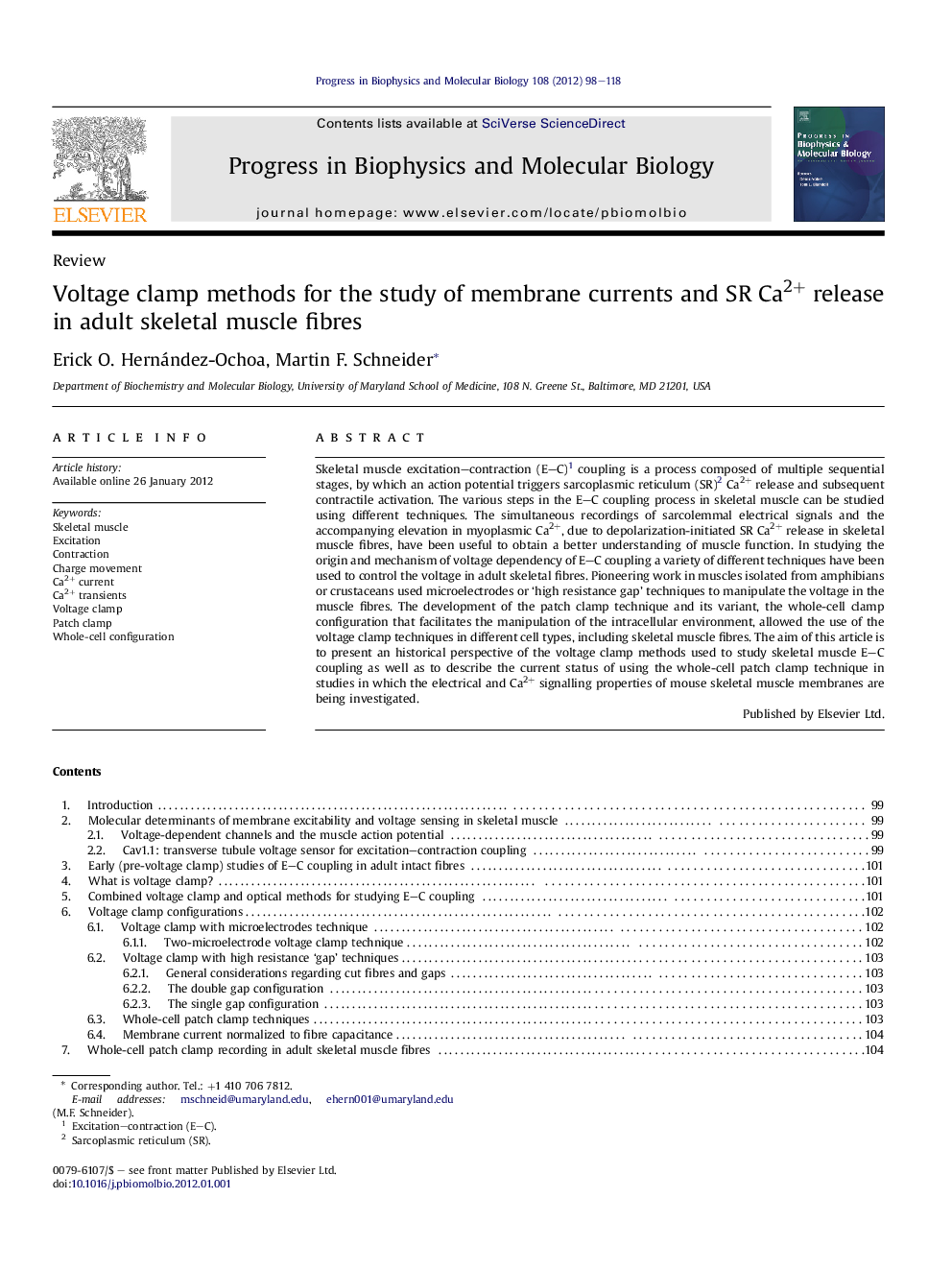| کد مقاله | کد نشریه | سال انتشار | مقاله انگلیسی | نسخه تمام متن |
|---|---|---|---|---|
| 2070146 | 1078469 | 2012 | 21 صفحه PDF | دانلود رایگان |

Skeletal muscle excitation–contraction (E–C)1 coupling is a process composed of multiple sequential stages, by which an action potential triggers sarcoplasmic reticulum (SR)2 Ca2+ release and subsequent contractile activation. The various steps in the E–C coupling process in skeletal muscle can be studied using different techniques. The simultaneous recordings of sarcolemmal electrical signals and the accompanying elevation in myoplasmic Ca2+, due to depolarization-initiated SR Ca2+ release in skeletal muscle fibres, have been useful to obtain a better understanding of muscle function. In studying the origin and mechanism of voltage dependency of E–C coupling a variety of different techniques have been used to control the voltage in adult skeletal fibres. Pioneering work in muscles isolated from amphibians or crustaceans used microelectrodes or ‘high resistance gap’ techniques to manipulate the voltage in the muscle fibres. The development of the patch clamp technique and its variant, the whole-cell clamp configuration that facilitates the manipulation of the intracellular environment, allowed the use of the voltage clamp techniques in different cell types, including skeletal muscle fibres. The aim of this article is to present an historical perspective of the voltage clamp methods used to study skeletal muscle E–C coupling as well as to describe the current status of using the whole-cell patch clamp technique in studies in which the electrical and Ca2+ signalling properties of mouse skeletal muscle membranes are being investigated.
Journal: Progress in Biophysics and Molecular Biology - Volume 108, Issue 3, April 2012, Pages 98–118